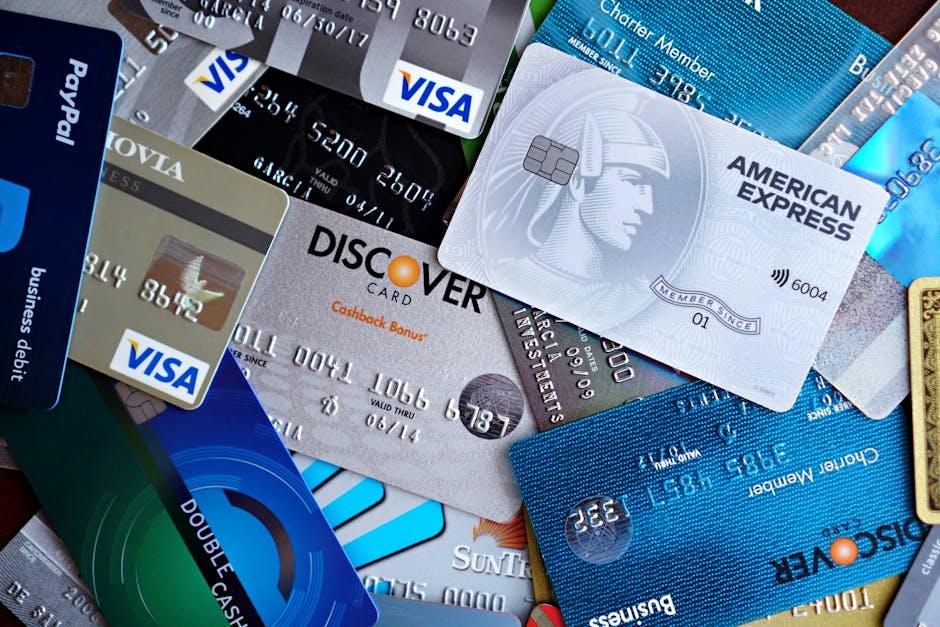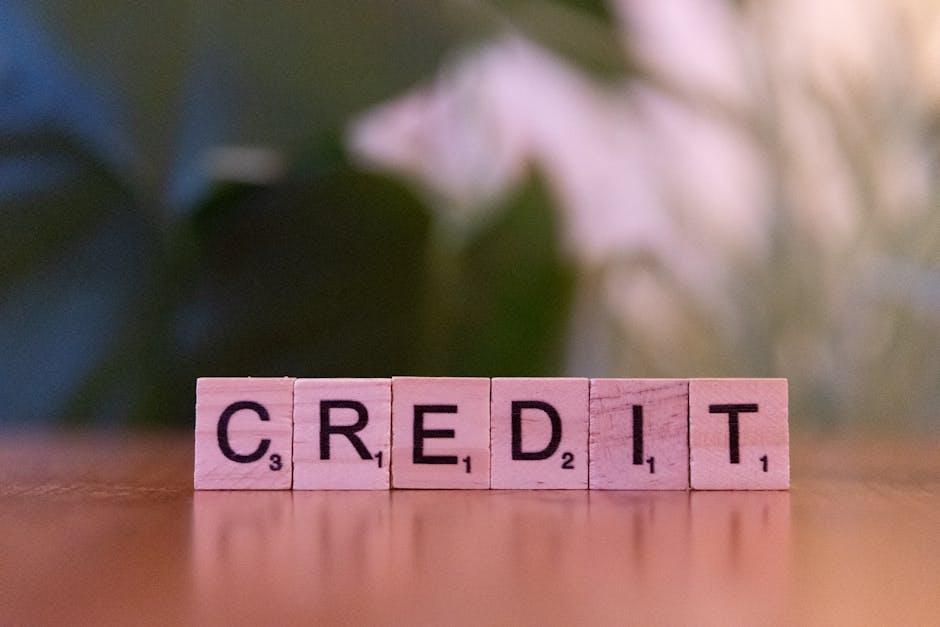In today’s fast-paced financial landscape, credit card debt can feel like an overwhelming burden. Many of us have fallen into the trap of accumulating balances that seem to grow exponentially thanks to high interest rates and the allure of easy credit. However, the good news is that there are effective strategies to help you regain control and eliminate this debt faster than you think. From prioritizing payments to leveraging smart budgeting techniques, there are actionable steps you can take to tackle your financial challenges head-on. In this article, we’ll explore a variety of proven strategies to help you crush your credit card debt quickly and pave the way for a healthier financial future. Let’s dive in and discover the smart approaches that can lead to lasting financial freedom.
Understanding the Impact of Credit Card Debt on Your Financial Health
Credit card debt can have a significant impact on your overall financial health, often manifesting in ways that affect both your immediate budget and long-term financial goals. Understanding these impacts can empower you to take control of your finances effectively.
One of the primary concerns with credit card debt is high-interest rates. Most credit cards in the U.S. come with interest rates that can exceed 20%, making it incredibly expensive to carry a balance. This means that even small purchases can balloon in cost when left unpaid:
| Purchase Amount | Monthly Payment | Time to Pay Off | Total Interest Paid |
|---|---|---|---|
| $500 | $50 | 12 months | $59 |
| $1,000 | $75 | 14 months | $116 |
| $2,000 | $150 | 15 months | $258 |
This table illustrates how even moderate purchases can lead to substantial additional costs over time.
Moreover, high credit card debt can negatively impact your credit score. Factors like high credit utilization (the percentage of your available credit that you’re using) can lower your score. A score below 670 can categorize you as a “fair” credit risk, affecting your ability to secure favorable loan rates or even obtain loans at all.
- Increased Monthly Payments: As debt grows, so does the minimum payment, which can strain your monthly budget.
- Limited Financial Flexibility: Being tied to credit card payments leaves less room for savings, investing, or unexpected expenses.
- Stress and Mental Health: Financial burden can lead to significant emotional stress, impacting your overall well-being.
Finally, unresolved credit card debt can lead to long-term financial repercussions. If it becomes overwhelming, you might consider options such as consolidation or debt relief strategies, but these can also come with their own complications and long-term impacts on your creditworthiness.
Ultimately, addressing credit card debt proactively not only aids in financial recovery but also restores peace of mind. Developing a sustainable payment strategy and understanding the full implications of your debt are critical steps to achieving financial health.

Effective Budgeting Techniques to Accelerate Debt Repayment
Budgeting can be a powerful tool in your arsenal for accelerating debt repayment. By understanding where your money goes and planning accordingly, you can allocate more funds toward paying off your credit card debt. Here are some effective budgeting techniques to help you get ahead:
- Track Your Spending: Utilize budgeting apps like Mint or YNAB (You Need a Budget) to monitor your expenses. These tools provide insights into your spending habits and help you identify areas for cutbacks.
- Create a Zero-Based Budget: Ensure every dollar of your income is accounted for by assigning it to specific categories-bills, savings, and debt repayment. This method promotes discipline and accountability.
- Prioritize Debt Repayment: Use the snowball or avalanche method. The snowball method focuses on paying off the smallest debts first for quick wins, while the avalanche method tackles high-interest debts first to save on interest costs.
- Reduce Non-Essential Spending: Evaluate subscriptions, dining out, and other discretionary expenses. Cutting these costs can free up significant funds dedicated to paying off debt.
- Build an Emergency Fund: Having a small reserve can prevent you from accumulating more debt when unexpected costs arise. Aim for at least $500 to $1,000 initially.
- Set Up Automatic Payments: Automate minimum payments or additional amounts toward your debt to ensure you never miss a due date, avoiding late fees and additional interest.
- Review and Adjust Regularly: Continually review your budget. If you find yourself consistently under or over budget, make necessary adjustments to better align with your goals.
| Debt Repayment Strategy | Focus Area | Advantages |
|---|---|---|
| Snowball Method | Smallest debts first | Quick wins boost motivation |
| Avalanche Method | Highest interest debts first | Saves on interest payments in the long run |
| Zero-Based Budget | Every dollar assigned | Promotes control over spending |
Incorporating these budgeting techniques into your financial routine can significantly expedite your journey to becoming debt-free. Remember, being proactive with your finances not only helps you manage your debt better but also builds a healthier financial future.

Smart Strategies for Negotiating Lower Interest Rates
Negotiating lower interest rates on your credit cards can significantly reduce your overall debt burden. Here are some smart strategies to help you achieve this goal:
- Know Your Credit Score: Before initiating negotiations, check your credit score. A higher score gives you more leverage, while a lower score may require you to improve it first to secure better terms.
- Research Competitor Offers: Gather information on competing credit card offers that feature lower interest rates. Mentioning these can strengthen your case when negotiating with your current issuer.
- Prepare Your Case: Be ready to explain why you deserve a lower rate. This could include a history of on-time payments, a long relationship with the bank, or a sudden financial hardship that requires assistance.
- Be Confident and Polite: Approach the negotiation calmly and courteously. Confidence can help you make a compelling case, while politeness ensures a positive interaction with customer service representatives.
- Consider Balance Transfers: If negotiations fail, explore credit cards that offer 0% introductory APR on balance transfers. This can be a temporary solution to save on interest payments while you work on paying down your debt.
Here’s a simple table to help you track different credit card offers:
| Credit Card | Current Rate | Competitor Rate | Notes |
|---|---|---|---|
| Card A | 18.99% | 15.99% | Consider mentioning this rate when negotiating. |
| Card B | 22.99% | 19.99% | Check if they offer any promotional rates. |
| Card C | 20.99% | 16.99% | Long-standing customer – should leverage this. |
Utilizing these strategies effectively can not only lower your interest rates but also accelerate your journey towards a debt-free life.

Leveraging Balance Transfers for Strategic Debt Management
Utilizing balance transfers can be a game-changer in your journey to manage and eliminate credit card debt. This strategic approach involves transferring existing debt from high-interest credit cards to a new card, ideally one that offers a lower interest rate or even a promotional 0% rate for a limited time. Here’s how to effectively leverage balance transfers to get a handle on your financial situation:
- Understand the Costs: While balance transfers can significantly reduce your interest expenses, be aware of potential transfer fees. Most credit cards charge a fee ranging from 3% to 5% of the transferred amount. For instance, transferring a $2,000 balance could incur a fee of $60 to $100. It’s important to calculate whether the savings from lower interest justify these costs [[1]].
- Shop for the Best Offers: Many credit card companies provide promotional balance transfer options with enticing rates. Look for offers that include 0% interest for an introductory period, which can span as long as 12 to 18 months. During this timeframe, your payments will primarily reduce your principal debt, allowing for a quicker payoff [[2]].
- Know the Time Frame: Be aware of the promotional period’s end date. Make a plan to pay off your balance before the standard interest rates kick in; otherwise, you may find yourself back in debt with a higher rate.
- Limit New Debt Accumulation: Once you transfer the balance, avoid accumulating new balances on the old cards. This habit can negate the benefits of your transfer and lead to an even more challenging debt situation.
| Card Type | Introductory APR | Duration | Balance Transfer Fee |
|---|---|---|---|
| Card A | 0% | 15 months | 3% |
| Card B | 1.99% | 12 months | 5% |
| Card C | 0% | 18 months | No fee |
By carefully selecting the right balance transfer offer and managing your payments, you can dramatically reduce your credit card debt and reclaim financial freedom. Monitor your progress, stay disciplined, and you’ll pave the way to a healthier financial future.

To Wrap It Up
In conclusion, conquering credit card debt doesn’t have to feel like an uphill battle. By implementing these smart strategies, you empower yourself to take control of your finances and forge a path to financial freedom. Remember, every step you take on this journey brings you closer to a debt-free life. Whether you choose to cut expenses, negotiate lower interest rates, or consolidate your debts, the key lies in persistence and discipline. Embrace your new mindset, and watch how quickly you can transform your financial health. The road may require effort, but the destination-financial peace-is well worth it. Start today, and crush that debt for good!














